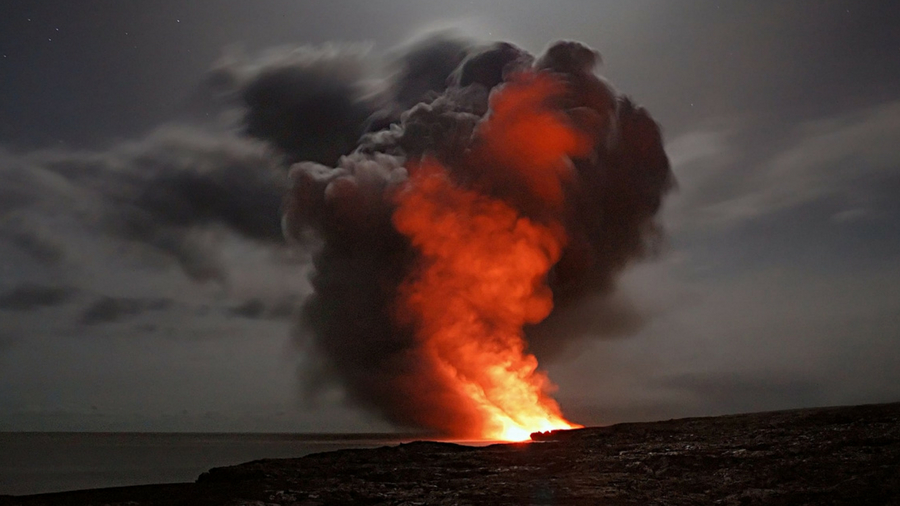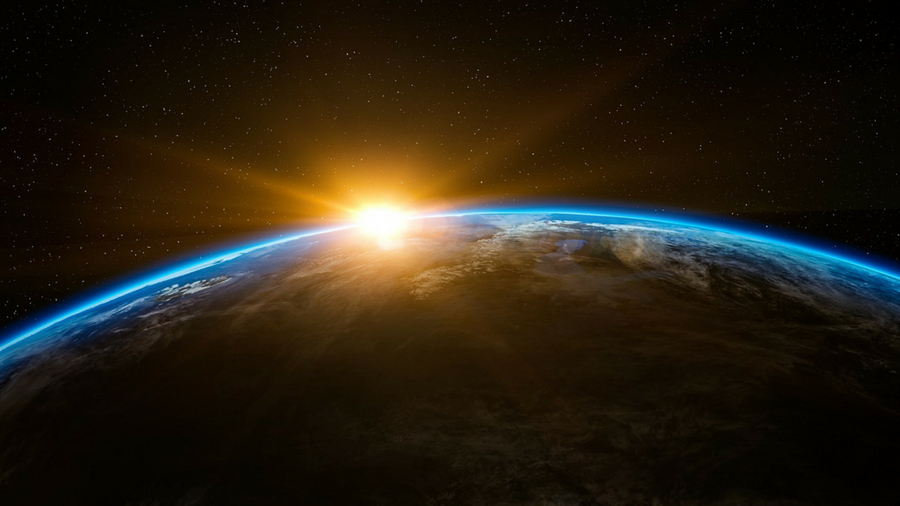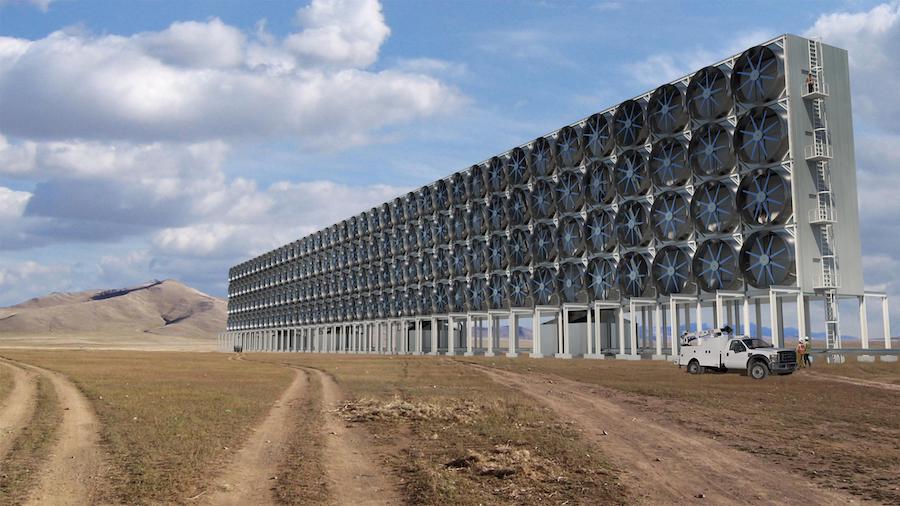Could geoengineering be used to manage our climate?
An industrial solution for an industrial problem?

Main image: Clouds can be manipulated to reflect-back sunlight. Credit: CC0 Creative Commons
Tech tells us that our planet is heating up. The hottest years ever recorded, in order, are: 2015, 2016, 2017, to be followed, probably by 2018. We’re pumping out carbon dioxide, which traps heat in our atmosphere. Hence the name ‘greenhouse gases’. Earth-orbiting satellites have recorded it all, and scientists now say it’s 95% likely to be the result of human activity since the mid-20th century. Polar ice caps are melting, sea levels are rising, the oceans are getting warmer and more acidic. Tropical cyclones are on the increase.
What if the answer was to spray chemicals into the atmosphere and the oceans to counteract the effects of greenhouse gases? This is geoengineering, a range of complex and controversial techniques that are set to one day be used to tinker with global weather systems.
So is geoengineering the magic bullet to reversing – or at least stabilizsing – the rise in global temperatures? Or is it a Pandora’s box?
- Do you have a brilliant idea for the next great tech innovation? Enter our Tech Innovation for the Future competition and you could win up to £10,000!
The volcano effect
When volcanoes erupt and send millions of tonnes of ash and dust into Earth’s atmosphere, the planet cools down. Back in 1783, Iceland’s Laki chain of volcanoes produced an ash cloud of sulphur dioxide, hydrogen chloride and hydrogen fluoride gases that probably went stratospheric, causing global temperatures to noticeably drop. Why? Sunlight was blocked, so there was less heat in Earth’s atmosphere.

A similar drop in global temperatures was recorded after Mount Pinatubo’s eruption in the Philippines in 1991, which blasted 15 million tonnes of sulphur dioxide into the stratosphere. Nobody is suggesting that we find a way to trigger more volcanic eruptions, but there could be a way to mimic the effect of ash clouds.
Dimming the sun
A paper published in Nature in April 2018 by a group of academics in developing countries – those likely worst affected by global warming – posits that solar geoengineering could be used to produce an ash cloud similar to that created by a volcanic eruption. They reckon that injecting five million tonnes of sulphur dioxide into the stratosphere would produce a layer of aerosol particles – mainly sulphuric acid droplets – that could reflect sunlight back into space.
Get daily insight, inspiration and deals in your inbox
Sign up for breaking news, reviews, opinion, top tech deals, and more.

However, sending millions of tons of aerosols into the stratosphere isn't a wise move unless you know exactly what the side effects could be. Sulphur dioxide could even damage the ozone layer if the operation is carried out carefully, or at least stop it regenerating. More research is needed.
Carbon capture
There are several ways of capturing carbon from the atmosphere, but in terms of how quickly they could cool the planet these concepts are (ahem) slow-burners.
Trees capture on average 200 tonnes of CO2 per hectare over a period of 40 years, so planting more of them is one option. Another way of getting rid of existing CO2 build-up is 'direct air capture' (DAC), which looks like it could be getting cheaper.

Two companies, Carbon Engineering in Canada and Climeworks in Switzerland and Iceland, have developed banks of air-con unit-like devices in towers that filter air through a solution of potassium hydroxide. That reacts with CO2 to form potassium carbonate pellets or a concentrated CO2 gas.
Should the emitters of carbon dioxide – the factories and power stations causing the problem in the first place – be forced to install advanced ‘carbon capture’ and storage tech at source?
Marine cloud-brightening
Another geoengineering technique involves making clouds brighter so they reflect more sunlight back into space. In 2014, a team from the UK's University of Manchester proposed spraying salt particles – as a fine jet of salt water that would break down into small droplets – into clouds to increase their reflectivity, possibly from a fleet of ships on the world’s oceans. The particles then return to Earth as rain.

Sounds crazy? Well, exhaust from ships already causes more, and brighter clouds, above the world’s major shipping routes. And the Manchester team found that its method would increase cloud reflection by 5% – enough to combat the predicted effects of increased carbon dioxide levels over the rest of this century – using 30 megawatts of energy, about the same energy that two large ships produce. That latter figure is crucial: there’s no point in hugely polluting the atmosphere with CO2 while actively trying to reduce global warming.
Iron fertilization

The oceans are getting warmer, leading to more, and more severe, tropical cyclones, and the bleaching of coral reefs, which turn white if the water temperature is too high. So scientists propose putting iron filings into the ocean to stimulate the growth of phytoplankton, which photosynthesize – just like trees – and remove carbon dioxide from the atmosphere. It’s controversial, however, since dumping material into the already polluted oceans seems counterintuitive.
Why is geoengineering controversial?
Manipulating Earth's climate through solar geoengineering and carbon removal is controversial, and could have unforeseen consequences. Some scientists think there could be an increase in wildfires. It would also need to be done on a global scale; sun dimming in one hemisphere could change weather systems so much that it could cause drought in the other, and vice versa.
There's also the prospect that, once begun, geoengineering may have to continue indefinitely to prevent a sudden change in temperature that could cause floods, kill crops, and wipe out entire species.

Adding aerosols to the stratosphere, or iron to the oceans, seems an incredibly industrial approach to helping the environment. However, uncontroversial options like planting trees or direct carbon capture won’t on their own pause, slow or reverse global warming – we need to slow or reverse the rise in global temperatures.
So is geoengineering the magic bullet? More research is needed, but one thing we do know is that the more we can do to reduce our emissions of greenhouse gases now, the less potentially risky geoengineering we’ll need to do in the future.
Or we could just hope that more volcanoes erupt, and save us all.
TechRadar's Next Up series is brought to you in association with Honor

Jamie is a freelance tech, travel and space journalist based in the UK. He’s been writing regularly for Techradar since it was launched in 2008 and also writes regularly for Forbes, The Telegraph, the South China Morning Post, Sky & Telescope and the Sky At Night magazine as well as other Future titles T3, Digital Camera World, All About Space and Space.com. He also edits two of his own websites, TravGear.com and WhenIsTheNextEclipse.com that reflect his obsession with travel gear and solar eclipse travel. He is the author of A Stargazing Program For Beginners (Springer, 2015),
